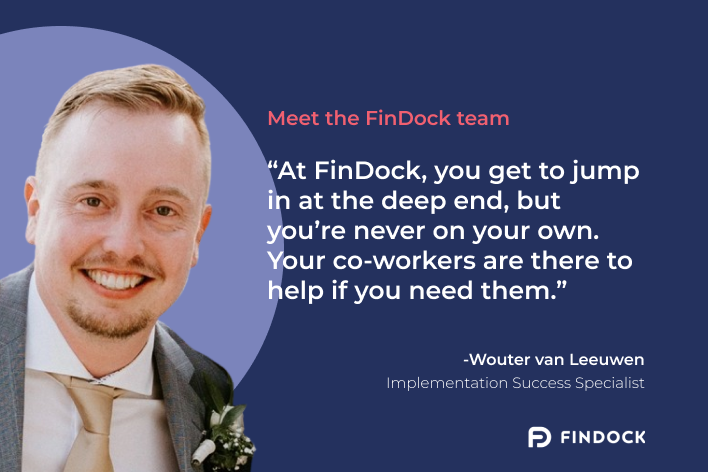Who are the people behind our company? Why do they enjoy working at FinDock? What makes their jobs special? Through this blog series, we’d like to introduce our partners and customers to the well-versed experts on our team. Today, Implementation Success Specialist Wouter van Leeuwen shares his experience!
“You get to jump in at the deep end, but you’re never on your own”
“What I like about FinDock is that I’m part of a close-knit team,” says Wouter. Having worked at different companies in various industries, he knows this isn’t always the case.
“There’s no cubicle culture here. We’re a team of driven experts who communicate transparently and informally with each other.”
Wouter appreciates the fact that there’s enough space to explore new ideas within a supportive environment.
“At FinDock, you get to jump in at the deep end, but you’re never on your own. Your co-workers are there to help if you need them.”
“We can tap into a wealth of knowledge to go the extra mile”
As a member of the Customer Success Team, Wouter loves that no two days are the same. He explains, “I might work on a major implementation process on Monday, answer small support questions on Tuesday, and dive into NPSP to provide some additional advice to a customer on Wednesday.”
The latter example goes to show that FinDock’s experts do a lot more than the average customer support department.
“Our goal is to make partners and customers successful. We go above and beyond to make that happen. Since each of us has tons of Salesforce experience, we can tap into a wealth of knowledge to go the extra mile. That’s an aspect of my job that I truly love.”
Would you also like to join the FinDock team? Check out the careers page to see the open positions.
